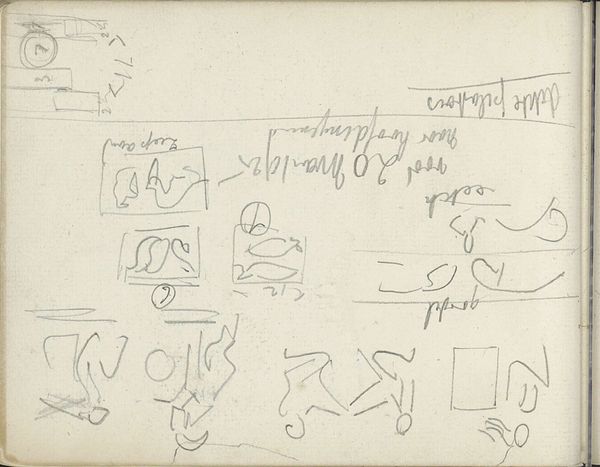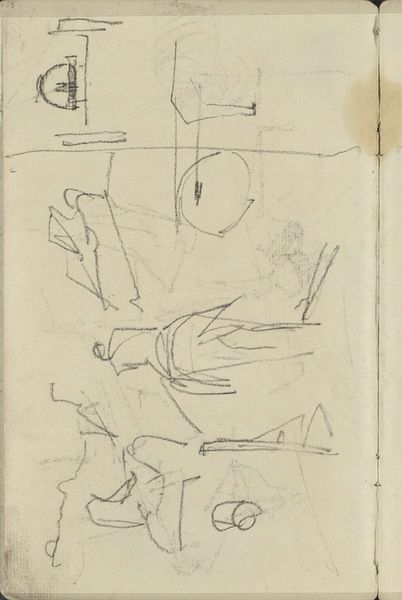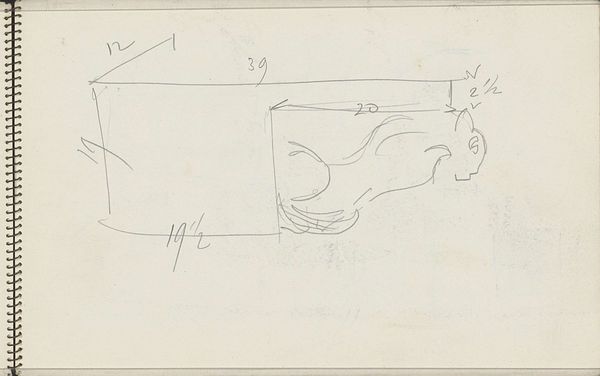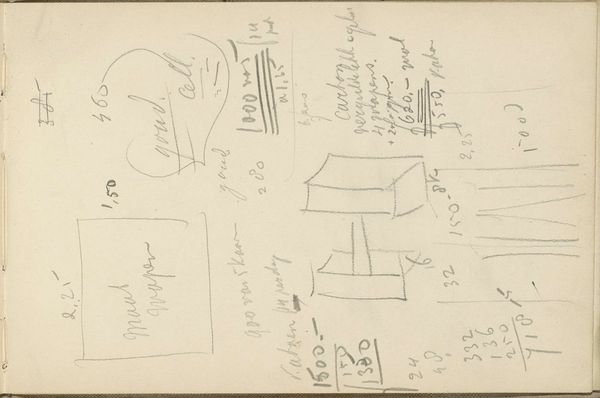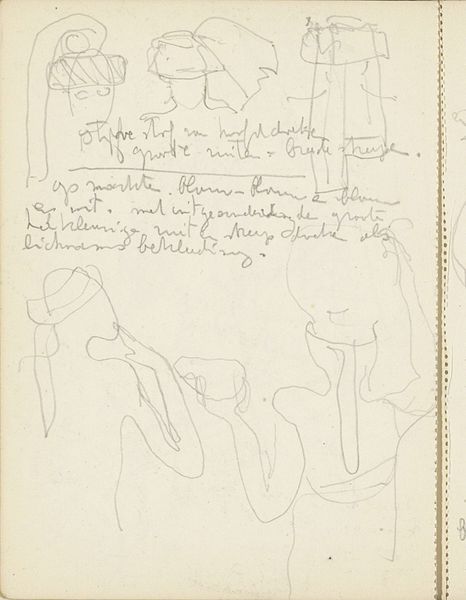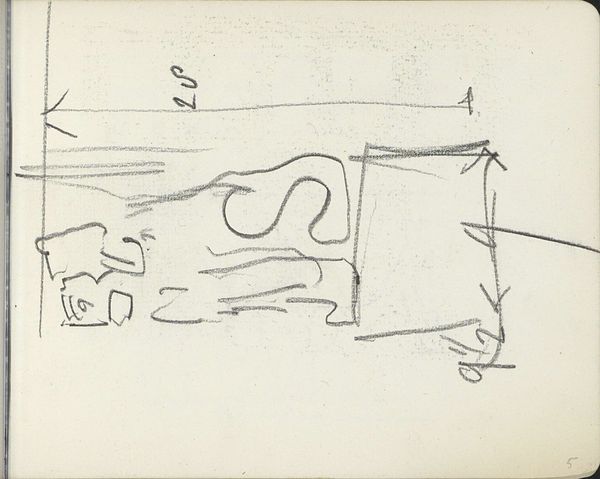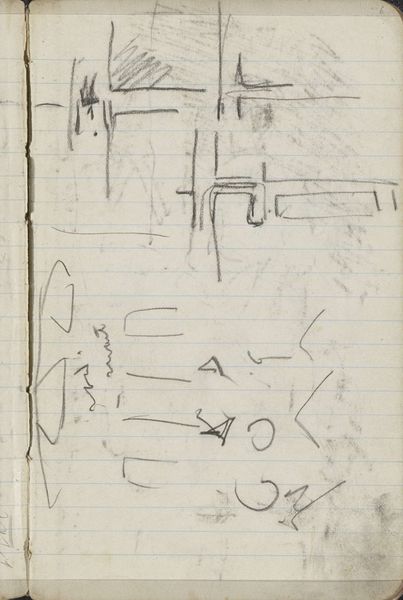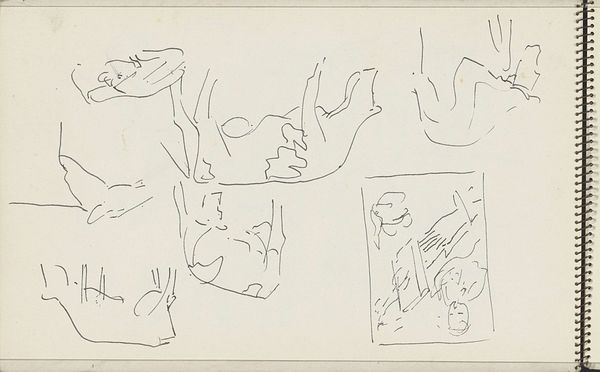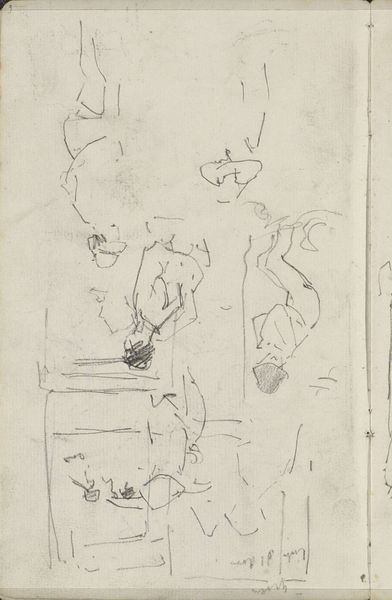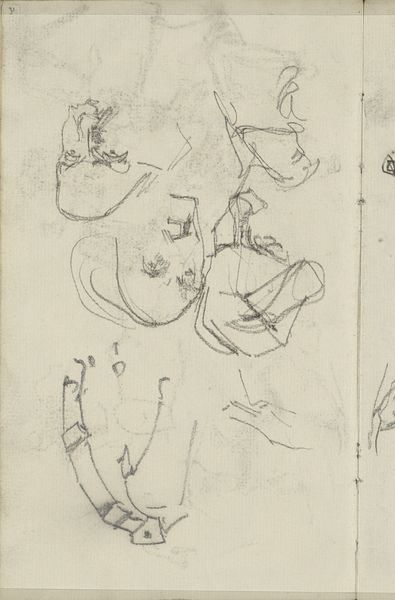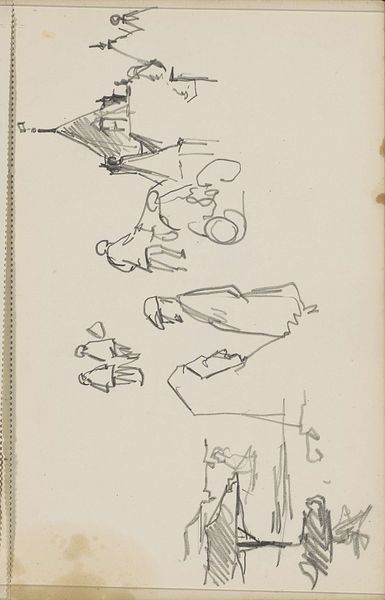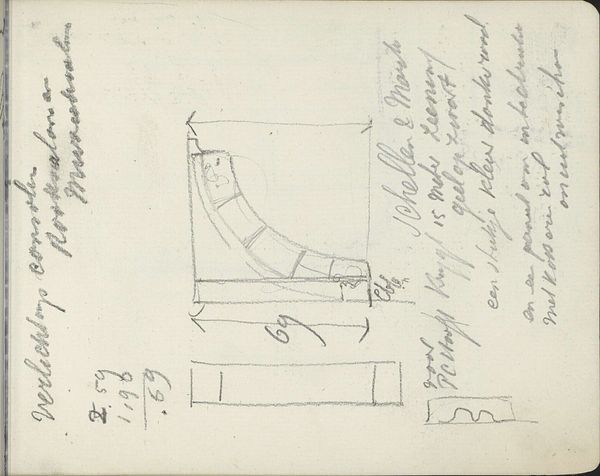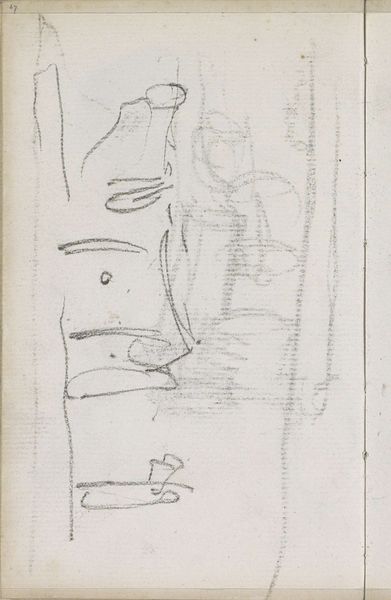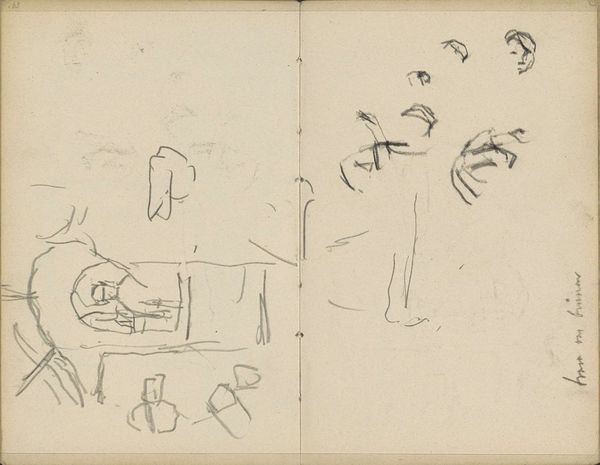
Copyright: Rijks Museum: Open Domain
Curator: Let’s turn our attention to this fascinating page from a sketchbook. The Rijksmuseum holds this drawing, “Ornamenten met uilen, eekhoorns en varens,” by Carel Adolph Lion Cachet, dating from around 1928. It’s executed in pencil and ink. Editor: Immediately, it strikes me as raw, an almost archaeological find into the artistic process itself. You get a sense of the artist thinking aloud. The gestural quality gives it immediacy. Curator: Exactly! It offers a privileged glimpse into Cachet’s method. You see the tentative lines, the multiple ideas vying for space on the page. Consider the interplay between the representational sketches of owls, squirrels, and ferns alongside the geometric patterns. The art nouveau influence is subtly woven into these elements. Editor: I wonder about the audience Cachet envisioned for this, if any. This feels so intimate. It's not intended for public display, so to speak, but a functional aid, almost like a memorandum. Do we know the role of personal sketchbooks in the broader Arts and Crafts movement at the time? Curator: The Arts and Crafts movement emphasized the integration of art and everyday life, and sketchbooks played a vital role in this. They served not only as spaces for idea generation but also as tools for observing and appreciating the natural world, elements that were then translated into decorative motifs. Look closely, and you'll notice hand lettering mixed with the sketches – further evidence of that integration. Editor: That interplay is rather sophisticated. Given the era and Arts and Crafts, would these be more symbolic motifs rather than true nature? Are these symbolic representations of natural forms serving a deeper symbolic function? Curator: I believe there's a fusion. While there is a definite move toward symbolic simplification, notice how the forms retain enough of their organic quality to remain identifiable. Think of how these designs might be deployed within a larger architectural project. These weren't merely aesthetic choices but had social connotations. This shows the public's role in defining the function of a sketchbook in Cachet's world. Editor: The raw honesty of this piece certainly changes my ideas about what a museum-worthy work entails. Curator: Precisely. It's a potent reminder that finished artworks are only one part of the artistic narrative. It helps us see the artist's thoughts and inspirations.
Comments
No comments
Be the first to comment and join the conversation on the ultimate creative platform.
